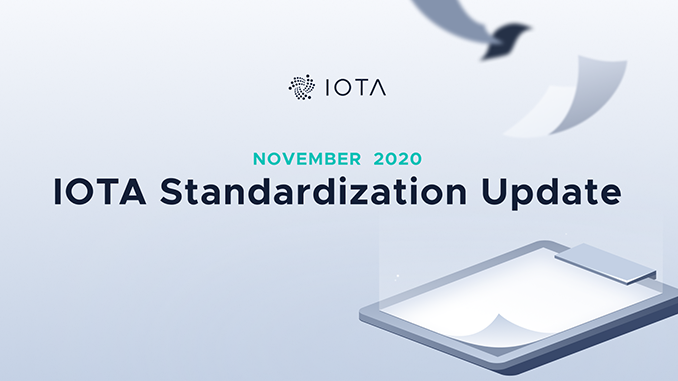
IOTA is making progress towards being recognized by international organizations as a standard for Internet of Things (IoT) solutions. At least this is what the IOTA Foundation writes and explains the way to take the corresponding certifications.
With its focus on the Internet of Things (IoT), IOTA has played a special role among crypto-currencies with their ecosystems since its inception. IOTA’s Tanglenet is optimized to connect machines of all kinds to a network, thus enabling automated data exchange and control. Payment transactions with MIOTA are also planned. And while numerous pilot projects with industry partners are to demonstrate practical suitability at IOTA, the IOTA Foundation is working behind the scenes to ensure that it is officially classified as a standard. In a longer blog post, IOTA explains where it currently stands in this endeavor.
Object Management Group (OMG) as bouncer for standards
According to IOTA, the company maintains contacts with numerous international organizations in which standards are certified. Widely accepted standards have the great advantage that they work across manufacturers. The most important contact for IOTA is the Object Management Group (OMG), a consortium that has been in existence since 1989 and is concerned with standards in the IT sector. Apple, IBM and Sun were among the founding members, Microsoft joined later. IOTA is now also a member of the OMG through the foundation and is involved in various working groups, including that for block chains.
IOTA wants the OMG to classify the future IOTA 2.0 as the standard protocol for IoT. At the same time, the OMG is working towards having IOTA Streams (formerly Masked Authenticated Messaging (MAM)) recognized by the OMG as an independent standard. IOTA is also contributing to the OMG in areas such as digital identities and smart contracts.
The formal process leading to the OMG standard involves the submission of a proposal, a minimum six-month period for comments from other OMG members, and finally a vote in the relevant working group. IOTA writes that the protocol for IOTA 2.0 could be ready to start this process by spring. Then, with the release of IOTA 2.0 for Mainnet at the end of 2021, the way would also be clear for a decision by the OMG. For IOTA Streams as an independent proposal for a standard, the OMG is cooperating with the Dutch group SKALKY and their solution Freighter to submit a proposal in 2021 as well.
Conclusion: Standard IOTA – the OMG seal could become valuable
Although IOTA confidently considers itself already a “de facto” standard for IoT, certification of the IOTA 2.0 protocol and individual ecosystem components by the OMG would probably be a different matter. Ultimately, this means that OMG members and beyond can be sure that the solutions have been independently reviewed and found to be good. This makes it easier for them to turn the wheel themselves by programming their own modules or developing hardware components. In addition, the OMG has the right to submit the standards it recognizes to the International Organization for Standardization, known to consumers as ISO, in an accelerated process. The rarely known side aspect of the work of the IOTA Foundation for Formal Recognition of IOTA Technology as an IoT Standard is accordingly of greater importance.
Nevertheless, the IOTA community also knows that the timetables presented by the Foundation must be viewed with caution, too often they have already had to be corrected. Especially the assumption that IOTA 2.0 aka Coordicide will run stable as a final testnet in spring and can be submitted to the OMG sounds quite optimistic. Meanwhile, MIOTA, IOTA’s crypto currency, has worked its way out of a long low over the past few days and is finally trading well above 0.30 US dollars again – but still miles away from the all-time highs of over 4.50 US dollars recorded in December 2017.
Best place to buy Bitcoin:

Leave a Reply